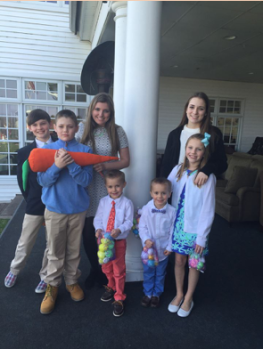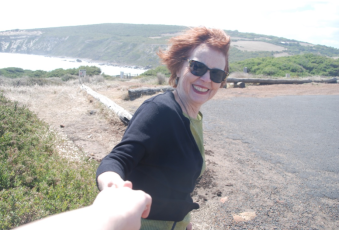Silver Linings Playbook –Matthew Quick
Person: Pat Peoples
Part 1 – Case Study
- CHARACTER ANALYSIS: IN THIS SECTION, YOU SHOULD THOROUGHLY ANSWER AS MANY OF THE FOLLOWING QUESTIONS AS ARE RELEVANT TO YOUR CHARACTER.
- What is your character’s name? Character Name: Pat Peoples
- What is some background information about this person?
- Pat was married to his high school sweetheart, Nikki. When she found him cheating on her, and almost beating the man who was with her to death, he was forced to a psychiatric hospital. Four years later, the court ruled that he was allowed to move in with his parents except Pat remembers nothing of the incident and longs for “apart time” to be over with Nikki. He believes he was only in the “bad place” for a few months, but soon realizes how much has changed.
- What is this person’s socioeconomic background?
- Pat is a kind person, who seems to over think a lot. He has been known to have acts of anger and outbursts. He explains that when he has the outbursts, he does not feel himself and knows that it is wrong. So, he is a loose canon. He seems to get along with men, but is very loyal to his Nikki and does not get too close to any women.
- Where did this person grow up? Philadelphia.
- What is this person’s likes and/or dislikes, strengths and/or weaknesses?
- Pat revolves his day around exercise. He wakes up and that is the only thing he does. If he has a therapy appointment or plans, he goes to extreme measures to make sure he completes his workout. Working out is part of his healing, because instead of having outbursts of anger, Pat starts to go to his basement gym and go 300 sit ups instead. He also enjoys watching the Eagles games with his family, talking to his father, taking care of his mother, reminiscing about old times with Nikki and talking to Cliff in the cloud room. He does not like Kenny G or the song “songbird.” Every time this song comes on, he gets completely angry. He then turns his anger into hums and anytime he ever hears the name Kenny G he simply takes a deep breath and counts to ten. He dislikes when people are mean to his family, taking his medicine, discussing reality, when his father is mean to his mother and when he realizes how much time he was really sent away.
- Describe this person’s family and other significant relationships
- The family revolves around the Philadelphia Eagles. His father and him do not have a very good relationship, and the only way Pat gets his father to talk to him is if its sports related. His mother is kind, and does too much for her family. His younger brother, Jake is married to Caitlin and they have a very successful job.
- Describe other personal characteristics
- He has a best friend Ronnie that he rekindles his relationship with when he gets out of the hospital. They are neighbors. He has a wife Veronica, who is high maintenance and does not get along with Pat very well and a beautiful daughter Emily who Pat really connects with.
- STRESSORS: NOTE: YOU ARE EXPECTED TO LOCATE DIRECT QUOTES FROM THE NOVEL TO SUPPORT YOUR ARGUMENTS
- Describe this person’s unhealthy relationships, if any.
- Nikki – his ex wife. He has no remembrance of what happened and why him and Nikki are in apart time. He does know that he did do something bad, but his determination to make things better with Nikki is almost an obsession. Everything he does, and every improvement he makes is for Nikki. We later find out, that the doctors are telling him he knows what happened, but his mind blocked out the memory. Nikki is a high school english teacher, and Pat remembers every book that Nikki makes her students read, but when he begins to read them and he does not see the “silver lining” in the ending, he becomes angry.
- Evidence to support this: “I actually rip the book in half and throw the two halves at my bedroom wall. Basement. Stomach Master 6000. Five hundred crunches. Why would Nikki make teenagers read such a depressing novel? Weight bench. Bench press. One-hundred-thirty-pound reps. Why do people read books like The Bell Jar? Why? Why? Why?
- Describe some of the problems in this person’s life, if any: economic, educational, personal, occupational, legal, etc.
- He often has outbursts of anger. To relieve this anger, he is constantly working out. This is where he meets his friend Tiffany and they begin running together. Certain things trigger his anger to come out.
III. SYMPTOMS: NOTE: YOU ARE EXPECTED TO BE ABLE TO LOCATE QUOTES FROM THE NOVEL IN THIS SECTION TO BACK UP YOUR CLAIMS
- What are this person’s main symptoms?
- Pat’s main symptoms are sudden bursts of mood changes. Whether it is angry or sad. Nobody ever knows what his next move is going to be.
- When do these symptoms emerge?
- Symptoms come with certain triggers. Such as someone hurting his family, when someone talks badly about Nikki, when the Kenny G song comes on.
- What form do these stressors take? Can you give specific examples from the book?
- The most common form is anger. Below is an example of when he beat someone up and they had to be hospitalized because he was defending his brother at an Eagles tailgate.
- Evidence: Page 108. “Even thought I was defending my brother, even though I did not seriously hurt the Giants fan, I don’t feel proud at all. I feel guilty. I should be locked up again in the bad place. I feel as though Dr. Timbers was right about me – that I don’t belong in the real world, because I am uncontrollable and dangerous. “
- OUTCOME OF CASE: IN THIS SECTION, YOU SHOULD THOROUGHLY ANSWER AS MANY OF THE FOLLOWING QUESTIONS AS ARE RELEVANT TO YOUR CHARACTER
- Was there treatment for this person?
- He was sent to a psychiatric institution for many years. The doctors still did not think he was ready, but the court overruled this. He was then sent to weekly therapy, and was on many medications.
- If so, was this treatment effective?
- The institution was not at all effective, in fact it scared him and might have made things worse. When he was able to find a therapist that could relate to him, and when they found the right method of talking and balanced medicine, the symptoms seemed to not be as bad.
- If there was no treatment in the book, what treatment would your recommend? (therapy, meds, etc.)
- I think that the therapy and meds that Pat is currently on right now are leading him in the right direction. Although at the end of the book he has a small outburst, he learns how to deal with it. He often breaths, hums and counts to ten instead of bursting out.
Part 2 – Research on diagnosis
- DIAGNOSTIC CRITERIA – THIS CAN SIMPLY BE A PRINT OUT OF THE DSM-V RULES AND ESSENTIALLY ACT AS A CHECKLIST FOR YOU AND YOUR CLASSMATES TO FOLLOW.
- Does your patient meet the diagnostic criteria for a particular mental illness (See DSM-V)? Yes.
- Severe bipolar disorder with mood-congruent psychotic features
- What are the most common symptoms of this disorder?
- Bipolar 1: Agitated moods, a mix of high and low moods, manic episodes
- Mood- Congruent psychotic symptoms: false beliefs, hallucinations
- Cant function in a job or in relationships
- What is a typical age of onset? Early adulthood
- How well does your person’s symptoms match up with the overall symptoms of someone with this disorder?
- Pat matches up very well with the overall symptoms of someone with this type of disorder.
- TREATMENTS
- What are the most common treatments available?
- If it is severe, doctors suggest that a person should be institutionalized as well as well as medicine. If it is moderate, most people suggest therapy and medicine.
- How effective are the current treatments?
- Pat seems to have once had severe bipolar disorder, but it looks like he is on the path to recovery with weekly therapy sessions with a doctor he can relate to, and balanced medicine.
VII. GENERAL RESEARCH: IN THIS SECTION, YOU SHOULD COMMENT ON RELEVANT INFORMATION NOT DISCUSSED UNDER OTHER HEADINGS. FOR EXAMPLE:
- Are there any controversies surrounding this disorder?
- “The following edition of the DSM, DSM-III (1980), began to characterize illness with specific diagnostic criteria and shapes the modern definition of bipolar disorder, now termed as such. The biggest deviation from previous versions specified the symptom criteria required for the diagnosis of “episode” and it is the presence of varied episodes, which will construct the final diagnosis. Another major divergence in this edition is the separation of unipolar and bipolar depression and a characterization that they are two different types of mood disorder. This emphasized the polarity of mood in this characterization, that the presence of any mania indicates bipolar disorder, rather than the episodicity of the aforementioned manic-depressive insanity/illness, in which the recurrence of the mood states was the primary characteristic”
- Source:
- Mason, Brittany L., E. Sherwood Brown, and Paul E. Croarkin. “Historical Underpinnings of Bipolar Disorder Diagnostic Criteria.” Behavioral Sciences. MDPI, Sept. 2016. Web. 15 May 2017. <https://www.ncbi.nlm.nih.gov/pmc/articles/PMC5039514/>.
VIII. CONCLUSION – EVALUATION OF CASE
In this final section, you should discuss the ease with which your client was diagnosed. In other words did your client clearly suffer from a mental illness that is classified in the DSM-V, or was it a collection of symptoms that lent themselves to a variety of possible explanations?
Conclusion: Pat did not have a clear representation of bipolar disorder, but once I found mood-congruent psychotic features, the disorder looked a lot like his case. After a collection of symptoms, it finally occurred to me that my client is also a little obsessed with a false hope, his “silver lining.” I had to dig a litter further to realize that false accusations were a huge symptom in the mood- congruent features. With both disorders present, it seems to be a clear representation. Pat is already on his way to recovery. I do not believe he will ever be cured, but I do believe he is on the right track to moderate instead of severe.






